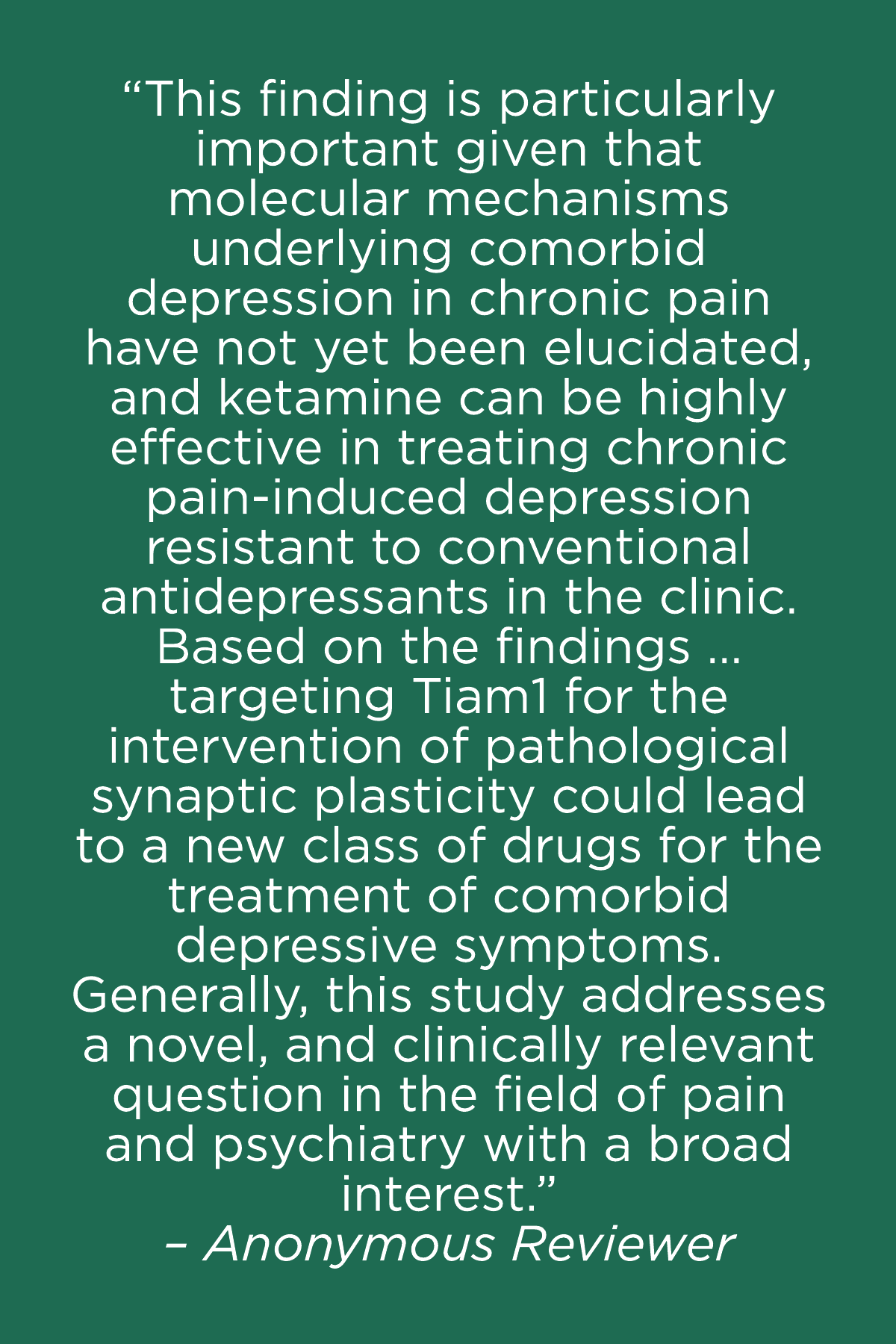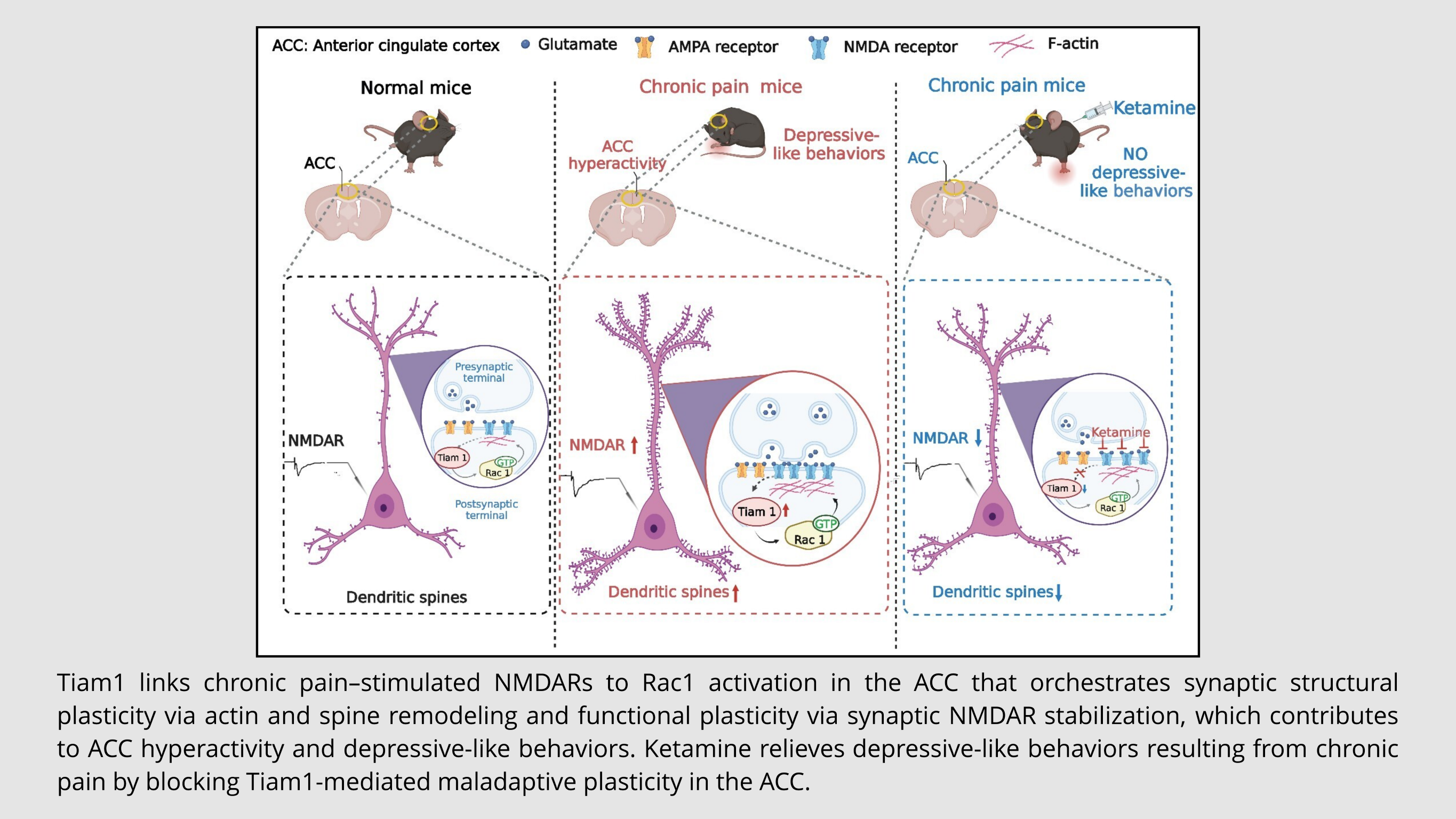 Researchers at the University of Alabama at Birmingham Marnix E. Heersink School of Medicine have uncovered a pathophysiological mechanism of chronic pain-induced depression and provided a potential therapeutic target for the treatment of chronic pain-induced mood disorders.
Researchers at the University of Alabama at Birmingham Marnix E. Heersink School of Medicine have uncovered a pathophysiological mechanism of chronic pain-induced depression and provided a potential therapeutic target for the treatment of chronic pain-induced mood disorders.
Chronic pain often leads to depression, increasing patient suffering and worsening prognosis; but the pathophysiological mechanisms underlying comorbid depressive symptoms in chronic pain remain unclear. A team led by Lingyong Li, Ph.D., associate professor at the Heersink Department of Anesthesiology and Perioperative Medicine, and Kimberley Tolias, Ph.D., professor at the Baylor College of Medicine Department of Neuroscience, demonstrated that Tiam1 – a Rac1 guanine nucleotide exchange factor that promotes dendrite, spine, and synapse development during brain development – orchestrates synaptic structural and functional plasticity in the anterior cingulate cortex (ACC) neurons, which underpins ACC hyperactivity and drives chronic pain-induced depressive-like behaviors. The work appears in a recent article in The Journal of Clinical Investigation, TIAM1-mediated synaptic plasticity underlies comorbid depression–like and ketamine antidepressant–like actions in chronic pain.
“Not only is this a fascinating paper, but it also has tremendous clinical implications for chronic pain and mental health,” says Dan E. Berkowitz, M.D., Alfred Habeeb Professor and Chair in the Heersink Department of Anesthesiology and Perioperative Medicine.
 Ketamine is an NMDAR antagonist emerging as a promising treatment for chronic pain and depression. Low, subanalgesic doses of ketamine can produce rapid, long-lasting antidepressant-like effects in patients and animal models. However, the underlying mechanisms of ketamine’s antidepressant effects have not been fully elucidated. The team’s research also revealed that ketamine induces sustained antidepressant-like effects in mouse models of chronic pain by blocking Tiam1-mediated maladaptive synaptic plasticity in ACC neurons.
Ketamine is an NMDAR antagonist emerging as a promising treatment for chronic pain and depression. Low, subanalgesic doses of ketamine can produce rapid, long-lasting antidepressant-like effects in patients and animal models. However, the underlying mechanisms of ketamine’s antidepressant effects have not been fully elucidated. The team’s research also revealed that ketamine induces sustained antidepressant-like effects in mouse models of chronic pain by blocking Tiam1-mediated maladaptive synaptic plasticity in ACC neurons.
“We used a powerful array of technical approaches to address ACC Tiam1-mediated synaptic plasticity as a novel pathophysiological mechanism of chronic pain-induced depression, such as the effective use of complementary approaches combing Tiam1-floxed mice, transgenic Cre line, viral vectors, and a pharmacological inhibitor of Tiam1 signaling to determine the functional role of ACC Tiam1 in chronic pain-induced depressive-like behaviors, and to determine Tiam1’s coordination on synaptic structural and functional plasticity in ACC from different angles, including dendritic spine morphometry, actin polymerization, synaptic NMDAR subunit protein levels, and electrophysiological recordings,” Li says.
“I am excited because our work demonstrates the critical role Tiam1 plays in the pathophysiology of chronic pain-induced mood dysregulation and the sustained antidepressant-like effects of ketamine, revealing it as a potential therapeutic target for the treatment of comorbid mood disorders in chronic pain,” Li says. “Indeed, pharmacological inhibiting Tiam1 activity with NSC23766 alleviates chronic pain-induced depressive-like behaviors and synaptic remodeling in mouse models of chronic pain.”

Note: Support for the research came from the US Department of Defense (W81XWH-20-10790 and W81XWH-21-10742), the Mission Connect/TIRR Foundation (020-122), and the US National Institute of Neurological Diseases and Stroke (R01 NS062829).